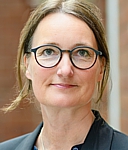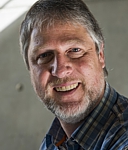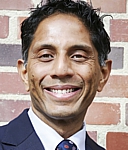 KEYNOTE SPEAKERS
KEYNOTE SPEAKERSFor the upcoming TSD2025, the following outstanding and eminent keynote speakers with respectable expertise in the conference interest fields agreed to give their respective pieces of speech (in alphabetical order):
See the next section below for details about the speeches (topics, abstracts).

|
Heidi ChristensenProfessor of Spoken Language Technology, Speech and Hearing Research Group, School of Computer Science, University of Sheffield, United KingdomFrom Code to Clinic: Making Speech-Based AI for Cognitive Health Work in the Real WorldAbstract: Cognitive decline is a pressing and growing global health challenge. It’s becoming increasingly clear that well-designed digital health technologies can play a key role in addressing this — offering tools that are accurate, easy-to-use, and suitable for home-based assessment, supporting healthcare professionals in diagnosing conditions like dementia. This talk will outline the major challenges in detecting and tracking cognitive health, including technical hurdles, the complexity introduced by co-morbidities and bias, and the broader challenge of moving beyond lab-based research to deliver systems that are genuinely usable and impactful in clinical settings. Biography: Heidi Christensen is a Professor of Computer Science at the University of Sheffield, United Kingdom. Her research focuses on applying speech and language processing techniques in healthcare. Her core expertise is in the detection and tracking of people’s physical and mental health including verbal and non-verbal expressions of emotion, anxiety, depression and neurodegenerative conditions in e.g., a therapeutic or diagnostic setting. Additionally, she has a long-standing interest in EDI, including developing datasets to advance equitable speech and language technologies and ensuring equitable access to new technologies for minoritised communities. More information at https://www.sheffield.ac.uk/cs/people/academic/heidi-christensen. |

|
Bernd MöbiusProfessor of Phonetics and Phonology, Dept. of Language Science and Technology, Saarland University, GermanyInformation Density and Phonetic VariationAbstract: In this talk I will take an information-theoretic perspective on speech production and perception. I will explore the relation between information density and phonetic encoding and decoding. Information density of a linguistic unit is defined in terms of surprisal (the unit's negative log probability in a given context). The main hypothesis underlying our experimental and modeling work is that speakers modulate details of the phonetic encoding in the service of maintaining a balance of the complementary relation between information density and phonetic encoding. To test this hypothesis we analyzed the effects of surprisal on phonetic encoding, in particular on dynamic vowel formant trajectories, plosive voicing, syllable duration, and vowel space size, while controlling for several basic factors related to the prosodic structure, viz. lexical stress and major prosodic boundaries, in the statistical models that accounted for phonetic effects of changes in surprisal (e.g. Malisz et al. 2018, Brandt et al. 2021). Our findings are generally compatible with a weak version of the Smooth Signal Redundancy (SSR) hypothesis (Aylett & Turk 2004, 2006, Turk 2010), suggesting that the prosodic structure mediates between requirements of efficient communication and the speech signal. However, this mediation is not perfect, as we found evidence for additional, direct effects of changes in predictability on the phonetic structure of utterances. These effects appear to be stable across different speech rates in models fit to data derived from six different European languages (Malisz et al. 2018). Moreover, we investigated effects on subword (segmental and syllable) levels and in local prosodic structures (at phrase boundaries), in acoustically clean and in noisy conditions. Our recent findings suggest that speakers make an effort to increase the difference between syllables in high vs. low surprisal contexts in the presence of noise. No interaction was found between noise and surprisal, suggesting that noise-related modifications may be independent of those induced by surprisal. If so, speech production models should include channel-based as well as message-based formulations: although channel coding is not part of linguistic representation (message formulation) during speech planning, it does shape the phonetic output. Biography: Bernd Möbius is Professor of Phonetics at Saarland University. He has worked extensively on text-to-speech synthesis and on the analysis and modeling of speech prosody. His recent work has focused on experimental methods and computational simulations to study aspects of speech production, perception, and acquisition. He was a member of the ISCA Board (2007-2025), Editor-in-Chief of Speech Communication (2013-2018), and a founding member of the ISCA SynSIG and its first chairman. He was TPC Chair of Interspeech 2015 and served as area chair of several Interspeech conferences. He received his Ph.D. degree in Phonetics and Communication Research from the University of Bonn, Germany (1992). More information at https://www.coli.uni-saarland.de/~moebius/mywww/index.html. |

|
Shrikanth NarayananNiki and Max Nikias Chair in Engineering and University Professor of Electrical and Computer Engineering, Computer Science, Linguistics, Psychology, Pediatrics, and Otolaryngology, USC Viterbi School of Engineering, University of Southern California, USASpeech-centered Machine Intelligence and Possibilities for Human Health and WellbeingAbstract: Converging developments across the machine intelligence ecosystem—from multimodal sensing and signal processing to computing—are enabling new human-centered possibilities both in advancing science and in the creation of technologies for societal applications including in human health and wellbeing. This includes approaches for quantitatively and objectively understanding human communicative, affective and social behavior with applications in diagnostics and treatment across varied domains such as distressed relationships, depression, suicide, autism spectrum disorder, addiction to workplace health and wellbeing. This talk will highlight some advances and possibilities in this realm in creating trustworthy approaches using human speech and language information, and beyond. Biography: Shrikanth (Shri) Narayanan is University Professor and holder of the Niki and Max Nikias Chair in Engineering at the University of Southern California (USC) and serves as the inaugural Vice President for Presidential Initiatives on the Senior Leadership Team of USC's President. He is a Professor in the Signal and Image Processing Institute of USC's Ming Hsieh Electrical & Computer Engineering department with joint appointments as Professor in Computer Science, Linguistics, Psychology, Neuroscience, Pediatrics and Otolaryngology-Head and Neck Surgery. He is also the inaugural director of the Ming Hsieh Institute, a Research Director for the Information Sciences Institute at USC and a Visiting Faculty Researcher at Google. He held the inaugural Viterbi Professorship in Engineering at USC (2007-2016). He was also a Research Area Director of the Integrated Media Systems Center, an NSF Engineering Research Center at USC, and was the Research Principal for the USC Pratt and Whitney Institute for Collaborative Engineering, a unique partnership between academia and industry (2003-2007). Prior to USC, from 1995-2000, he was with AT&T Labs-Research, Florham Park and AT&T Bell Labaratories, Murray Hill – first as a Senior Member and later as a Principal Member of its Technical Staff. Shri Narayanan received his M.S., Engineer, and Ph.D., all in electrical engineering, from UCLA in 1990, 1992, and 1995, respectively, and his bachelor of engineering in electrical engineering from the College of Engineering, Guindy (Chennai, India) in 1988. More information at https://sail.usc.edu/people/shri.html. |